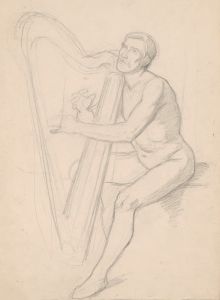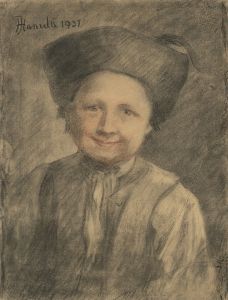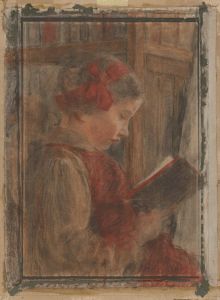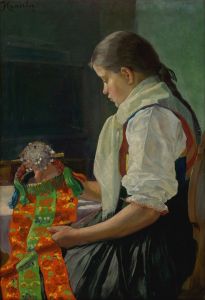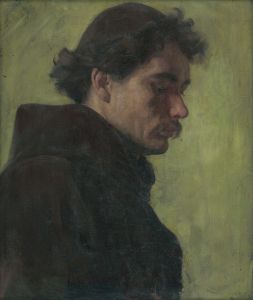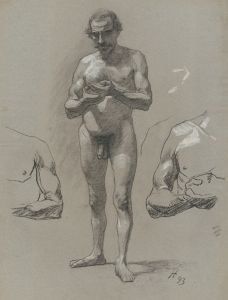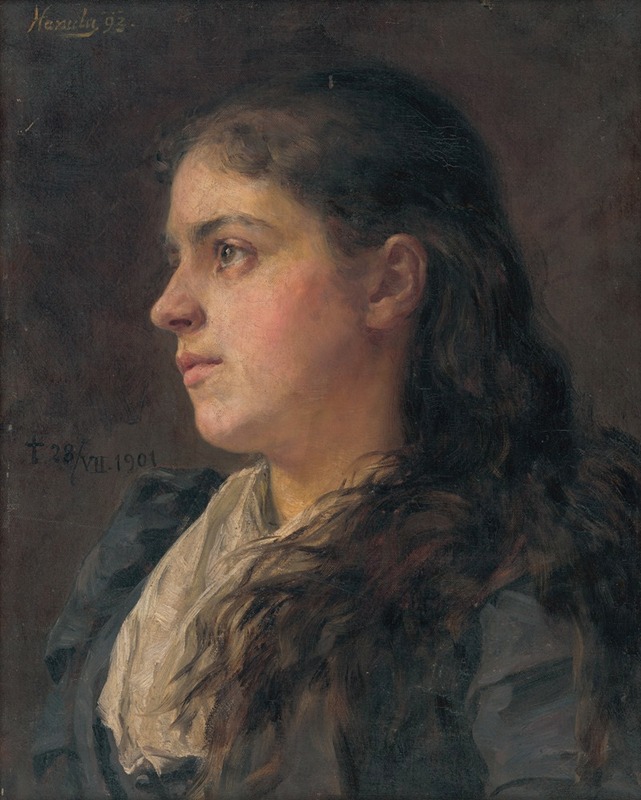
Portrait of a Woman
A hand-painted replica of Jozef Hanula’s masterpiece Portrait of a Woman, meticulously crafted by professional artists to capture the true essence of the original. Each piece is created with museum-quality canvas and rare mineral pigments, carefully painted by experienced artists with delicate brushstrokes and rich, layered colors to perfectly recreate the texture of the original artwork. Unlike machine-printed reproductions, this hand-painted version brings the painting to life, infused with the artist’s emotions and skill in every stroke. Whether for personal collection or home decoration, it instantly elevates the artistic atmosphere of any space.
Jozef Hanula was a Slovak painter known for his contributions to portrait and religious art in the late 19th and early 20th centuries. His work often reflected the cultural and social aspects of Slovak life, and he was recognized for his detailed and realistic style. One of his notable works is "Portrait of a Woman," which exemplifies his skill in capturing the essence and character of his subjects.
"Portrait of a Woman" by Jozef Hanula is a fine example of his portraiture, showcasing his ability to depict the human form with precision and sensitivity. The painting features a woman whose identity remains unknown, a common occurrence in portrait art where the focus is often on the representation rather than the individual. Hanula's attention to detail is evident in the intricate rendering of the woman's features, clothing, and expression, which together convey a sense of dignity and presence.
The composition of the portrait is traditional, with the subject positioned centrally, allowing the viewer to engage directly with her gaze. Hanula's use of color and light enhances the realism of the portrait, highlighting the textures of the fabric and the subtle nuances of the woman's complexion. The background is typically understated, ensuring that the focus remains on the subject.
Jozef Hanula was born in 1863 in Liptovský Mikuláš, a town in present-day Slovakia. He studied at the Academy of Fine Arts in Prague and later in Munich, where he was influenced by the prevailing artistic trends of realism and naturalism. His education and exposure to different artistic movements helped shape his approach to painting, which combined technical skill with a deep appreciation for his Slovak heritage.
Throughout his career, Hanula was committed to portraying the everyday lives of Slovak people, often incorporating elements of folk culture and tradition into his work. This dedication to cultural representation is evident in "Portrait of a Woman," where the subject's attire and demeanor may reflect aspects of Slovak identity.
Hanula's work, including "Portrait of a Woman," is significant not only for its artistic merit but also for its contribution to the cultural history of Slovakia. His portraits serve as historical documents, offering insights into the people and society of his time. Today, his paintings are appreciated for their aesthetic qualities and their role in preserving Slovak cultural heritage.
"Portrait of a Woman" remains an important piece within Hanula's oeuvre, demonstrating his mastery of portraiture and his ability to convey the humanity of his subjects. While specific details about the painting's creation and the identity of the woman depicted may be limited, the work continues to be valued for its artistic and cultural significance.





